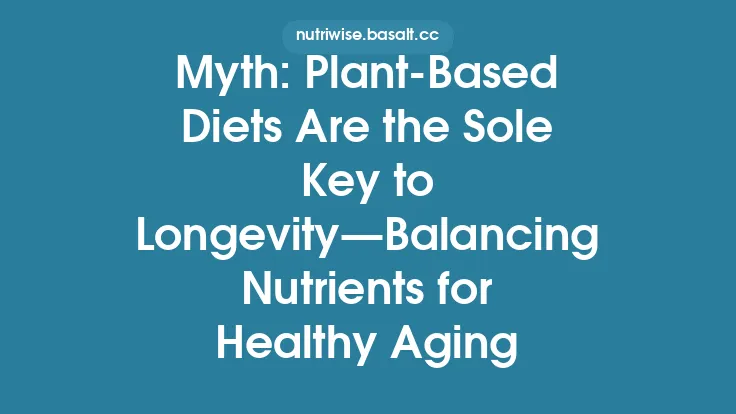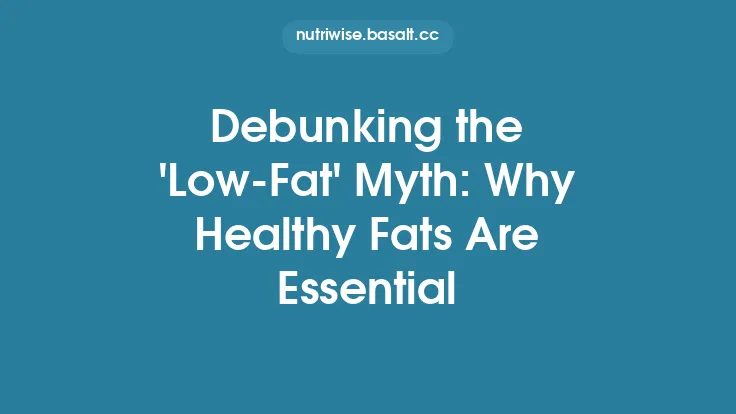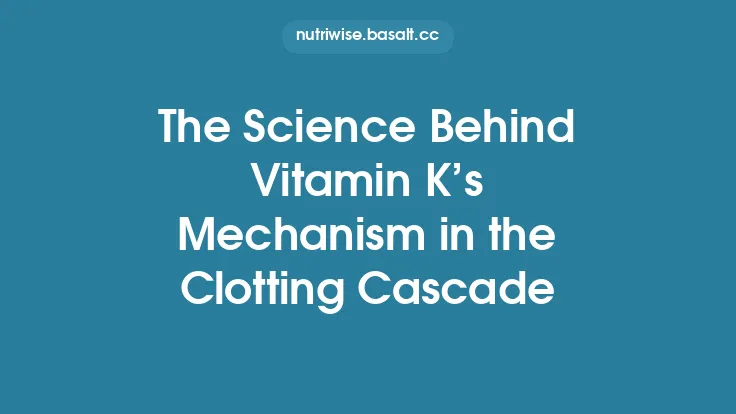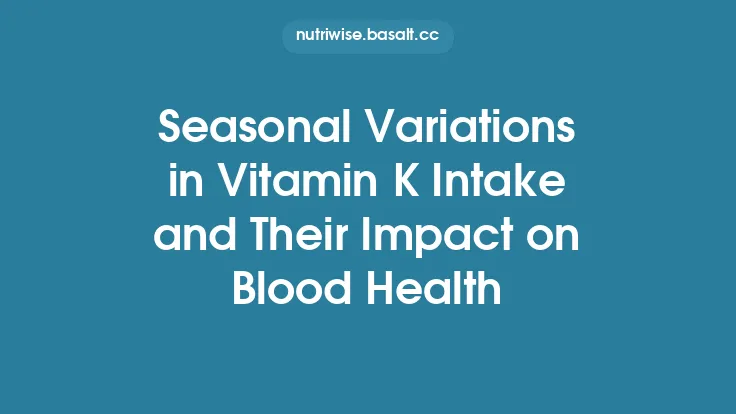Vitamin K is a fat‑soluble micronutrient that plays a pivotal, non‑redundant role in the body’s ability to form stable blood clots. While many people recognize it as a “clotting vitamin,” the pathways that sustain its function are intricate, involving specialized biochemical modifications, coordinated transport systems, and a dynamic interplay with the gut microbiome. Understanding these processes provides a solid foundation for appreciating why vitamin K status is a cornerstone of hemostatic health.
Chemical Nature and Forms of Vitamin K
Vitamin K refers to a family of structurally related compounds sharing a common 2‑methyl‑1,4‑napthoquinone core. The two most studied groups are:
- Phylloquinone (vitamin K₁) – a single‑ring molecule predominantly derived from plant chloroplasts.
- Menaquinones (vitamin K₂) – a series of compounds (MK‑4 to MK‑13) distinguished by the length of their isoprenoid side chain. These are synthesized by bacteria and can also be produced endogenously by the intestinal microbiota.
Although the various forms differ in side‑chain length and tissue distribution, they converge on a single functional requirement: serving as a cofactor for the enzyme γ‑glutamyl carboxylase. This enzyme catalyzes the post‑translational modification of specific glutamic acid residues in target proteins, converting them into γ‑carboxyglutamic acid (Gla) residues. The presence of Gla residues is essential for calcium binding, which in turn is critical for the biological activity of several clotting factors.
Absorption, Transport, and Storage
Because vitamin K is lipophilic, its intestinal uptake mirrors that of other fat‑soluble vitamins. The process can be summarized in three stages:
- Micellar Incorporation – Bile salts emulsify dietary lipids, allowing vitamin K to be solubilized within mixed micelles.
- Enterocyte Uptake – The micelles diffuse to the brush border of the small‑intestinal enterocytes, where vitamin K is taken up via passive diffusion and, to a lesser extent, carrier‑mediated mechanisms.
- Chylomicron Packaging – Inside the enterocyte, vitamin K is incorporated into nascent chylomicrons, which are secreted into the lymphatic system and eventually enter the systemic circulation.
Once in the bloodstream, vitamin K is transported primarily by lipoproteins, especially low‑density lipoprotein (LDL) particles. The liver, being the central hub for clotting factor synthesis, extracts a substantial portion of circulating vitamin K for incorporation into the γ‑carboxylation pathway. Excess vitamin K is stored in peripheral tissues, notably the pancreas, adrenal glands, and, to a lesser degree, adipose tissue. This storage pool can be mobilized during periods of reduced dietary intake, providing a buffer that helps maintain hemostatic competence.
Physiological Role in Blood Coagulation
The clotting cascade relies on a subset of plasma proteins—commonly referred to as vitamin K‑dependent clotting factors—that require γ‑carboxylation to become functionally active. The primary factors are:
- Prothrombin (Factor II)
- Factor VII
- Factor IX
- Factor X
In addition, the natural anticoagulant proteins C and S are also vitamin K‑dependent, underscoring the vitamin’s dual role in both promoting clot formation and regulating its extent.
The γ‑carboxylation reaction introduces Gla residues into the N‑terminal region of these proteins, creating high‑affinity calcium‑binding sites. Calcium ions act as a molecular bridge, anchoring the clotting factors to negatively charged phospholipid surfaces (e.g., platelet membranes). This membrane localization is a prerequisite for the assembly of enzymatic complexes that accelerate the conversion of pro‑thrombin to thrombin, ultimately leading to fibrin formation and clot stabilization.
Without sufficient vitamin K, the γ‑carboxylation step is incomplete, yielding under‑carboxylated clotting factors that exhibit markedly reduced calcium affinity. The clinical consequence is a prolonged prothrombin time (PT) and an increased tendency toward bleeding, even though the underlying genetic blueprint for clotting factor production remains intact.
Regulation of Vitamin K‑Dependent Processes
The body employs several feedback mechanisms to fine‑tune vitamin K utilization:
- Enzyme Kinetics – γ‑Glutamyl carboxylase operates near its maximal velocity under normal vitamin K concentrations, ensuring rapid carboxylation of newly synthesized clotting factors. When vitamin K becomes limiting, the enzyme’s activity declines proportionally, providing a built‑in sensor of nutrient status.
- Recycling via the Vitamin K Cycle – After serving as a cofactor, vitamin K is converted to its epoxide form. The enzyme vitamin K epoxide reductase (VKOR) then regenerates the active quinone, allowing a single vitamin K molecule to participate in multiple carboxylation cycles. This recycling loop is essential for maintaining functional vitamin K pools, especially during periods of low intake.
- Gene Expression – Hepatic expression of clotting factor genes is modulated by inflammatory cytokines and hormonal signals. In states of acute inflammation, the liver may prioritize the synthesis of acute‑phase proteins over clotting factors, indirectly influencing vitamin K demand.
These regulatory layers collectively safeguard hemostasis while preventing excessive clot formation, illustrating the nuanced balance that vitamin K helps orchestrate.
Factors Influencing Vitamin K Status
Several physiological and pathological conditions can perturb the delicate equilibrium of vitamin K availability:
| Category | Representative Factors | Mechanistic Impact |
|---|---|---|
| Gastrointestinal Health | Malabsorption syndromes (e.g., celiac disease, cholestasis), extensive bariatric surgery | Impaired micellar formation and chylomicron assembly reduce intestinal uptake. |
| Microbial Ecology | Broad‑spectrum antibiotic therapy, dysbiosis | Diminished bacterial synthesis of menaquinones curtails endogenous contribution. |
| Lipid Metabolism | Hyperlipidemia, disorders of LDL receptor function | Altered lipoprotein profiles affect transport and hepatic delivery of vitamin K. |
| Age‑Related Changes | Reduced bile acid secretion, decreased pancreatic exocrine function | Lower efficiency of fat emulsification hampers absorption in older adults. |
| Genetic Variants | Polymorphisms in VKORC1 or γ‑glutamyl carboxylase genes | Modify enzyme activity, influencing the vitamin K recycling rate and carboxylation capacity. |
Understanding these variables is valuable for clinicians who assess coagulation abnormalities, as they may point to an underlying vitamin K insufficiency even in the absence of overt dietary deficiency.
Clinical Assessment of Vitamin K‑Related Coagulation
The laboratory evaluation of vitamin K status is indirect, relying on functional assays that reflect the activity of vitamin K‑dependent clotting factors:
- Prothrombin Time (PT) and International Normalized Ratio (INR) – Sensitive to reductions in Factors II, VII, and X. A prolonged PT/INR can signal inadequate γ‑carboxylation, prompting further investigation.
- Factor‑Specific Activity Measurements – Quantifying the proportion of under‑carboxylated versus fully carboxylated forms of individual clotting factors provides a more precise picture of vitamin K utilization.
- PIVKA‑II (Protein Induced by Vitamin K Absence or Antagonist‑II) – Elevated levels of under‑carboxylated prothrombin are a recognized biomarker of subclinical vitamin K deficiency, especially useful in research settings.
Interpretation of these tests must consider confounding variables such as liver disease, concurrent anticoagulant therapy, and acute phase reactions, all of which can independently affect clotting factor levels.
Research Frontiers and Emerging Insights
The scientific community continues to uncover novel dimensions of vitamin K biology that extend beyond classical hemostasis:
- Extra‑Hepatic γ‑Carboxylation – Emerging data suggest that vitamin K‑dependent proteins in vascular smooth muscle and cartilage may influence calcification processes, linking vitamin K status to cardiovascular and skeletal health.
- Microbiome‑Vitamin K Axis – Metagenomic analyses reveal that specific gut bacterial taxa are prolific producers of long‑chain menaquinones, raising the possibility of microbiome‑targeted strategies to bolster endogenous vitamin K supply.
- Genotype‑Phenotype Correlations – Large‑scale genome‑wide association studies (GWAS) have identified variants in VKORC1 and GGCX (γ‑glutamyl carboxylase) that modulate individual susceptibility to bleeding disorders, opening avenues for personalized risk assessment.
- Novel Biomarkers – Advanced mass‑spectrometry techniques are enabling the quantification of a broader spectrum of under‑carboxylated proteins, potentially offering a more comprehensive assessment of vitamin K functional status.
These investigative threads underscore the evolving appreciation of vitamin K as a multifaceted micronutrient with systemic implications.
Practical Takeaways for Maintaining Healthy Coagulation
While the article refrains from prescribing specific foods or supplement regimens, several general principles can help preserve optimal vitamin K function:
- Support Fat Digestion – Adequate intake of dietary fats and bile‑stimulating nutrients (e.g., cholecystokinin‑releasing amino acids) facilitates micelle formation and absorption of lipophilic vitamins.
- Preserve Gut Microbial Diversity – Limiting unnecessary antibiotic exposure and incorporating prebiotic fibers can sustain a robust community of vitamin K‑producing bacteria.
- Monitor Lipid Health – Maintaining normal LDL and HDL levels ensures efficient transport of vitamin K to hepatic and peripheral sites.
- Address Malabsorption Early – In conditions that compromise fat absorption, clinicians may consider adjunctive strategies (e.g., medium‑chain triglyceride formulations) to improve vitamin K uptake.
- Consider Genetic Context – For individuals with known VKORC1 or GGCX polymorphisms, periodic evaluation of coagulation parameters may be warranted, especially before surgical procedures.
By integrating these considerations into routine health maintenance, individuals can help safeguard the vitamin K‑dependent mechanisms that underlie effective blood clotting.
In sum, vitamin K serves as an indispensable cofactor that enables the liver to produce fully functional clotting proteins, thereby ensuring that bleeding is promptly arrested while preventing unchecked thrombosis. Its journey—from dietary or microbial origin, through complex absorption and transport pathways, to the enzymatic heart of γ‑carboxylation—exemplifies the intricate choreography of micronutrient biology. A nuanced appreciation of the factors that influence vitamin K status equips both clinicians and health‑conscious individuals to recognize and address subtle disruptions before they manifest as clinically significant coagulopathies.





